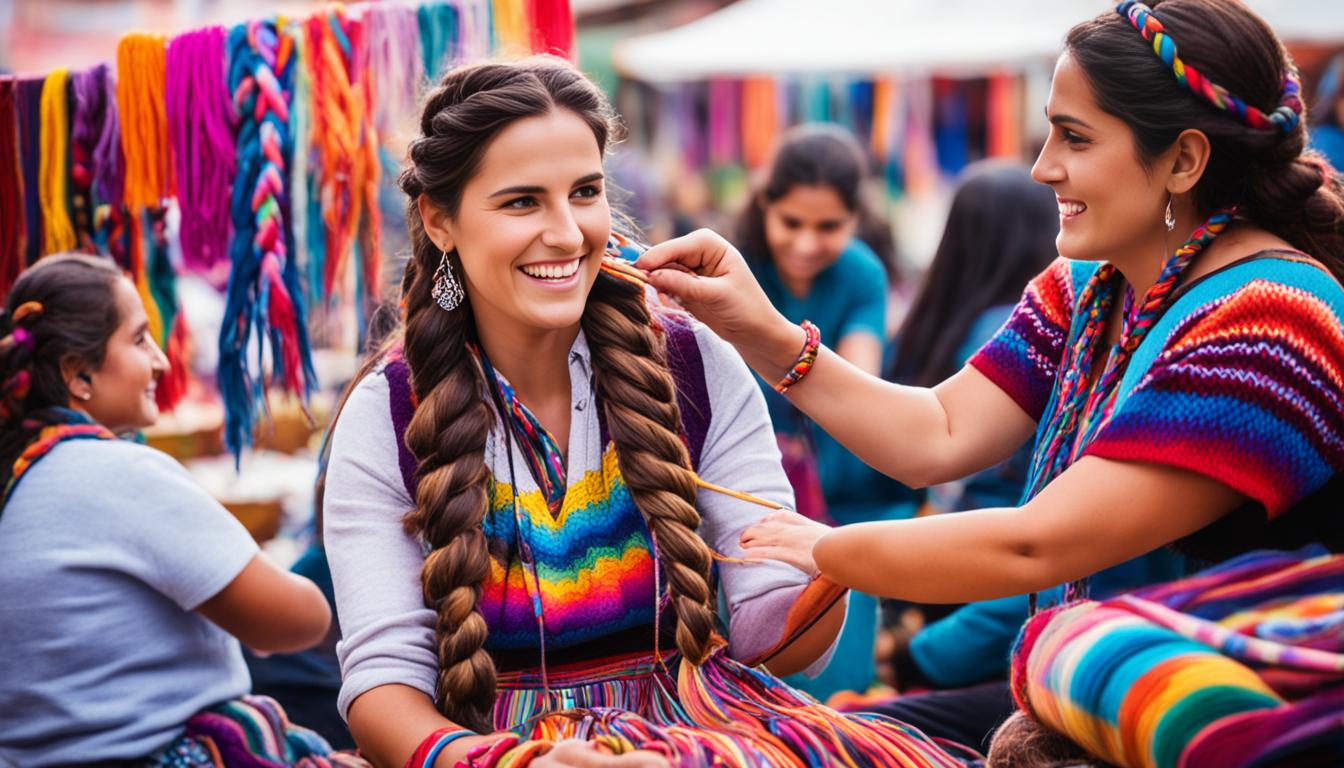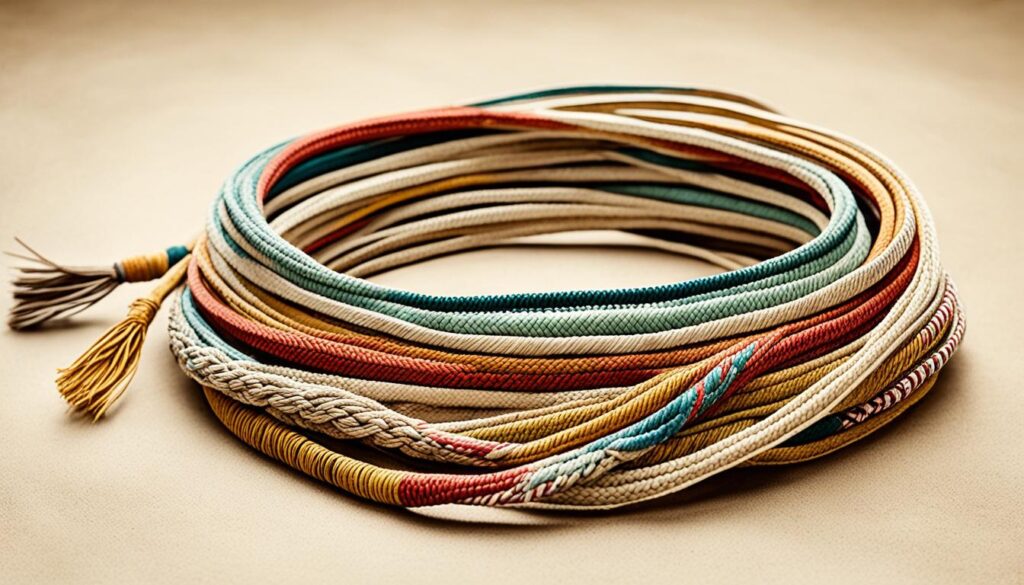
When you think of Peruvian beauty traditions, what comes to mind? The vibrant textiles, the intricate jewelry, or perhaps the colorful festivals? But what about their hairstyles? Have you ever wondered if Peruvians wear braids as part of their cultural hair practices?
Peru is a country rich in history and diverse cultural traditions. And when it comes to hairstyling, braids have played a significant role in Peruvian beauty customs for centuries.
Braiding in Peru dates back to ancient times, even pre-dating the Incan civilization. In fact, the practice of braiding can be traced as far back as 800 BC. But what are the traditional braiding customs in Peruvian culture? How has the art of hair braiding evolved over time? And what does it mean for the Peruvian people today?
In this article, we’ll explore the fascinating world of Peruvian hairstyle traditions, delve into the history of Andean braids, uncover the significance of turbans and hair styling in ancient Peru, and examine the preservation of braided artifacts that offer us a glimpse into the past. Are you ready to discover the cultural hair practices in Peru and answer the question: Do Peruvians wear braids?
Key Takeaways:
- Braids have been a significant part of Peruvian culture since ancient times.
- The practice of braiding in Peru dates back to as early as 800 BC.
- The Andean region is known for its intricate and sophisticated braiding techniques.
- Peruvians once used braids for practical purposes, such as making slings, belts, and turbans.
- While the art of braiding has diminished in modern times, a few individuals still maintain the traditional braiding skills.
History of Andean Braids
Andean braids hold a significant place in the history of Peru, with a tradition that spans thousands of years. These intricate braided cords were used for a variety of practical purposes, such as creating slings, belts, and packing materials. The ancient Peruvians possessed remarkable skills in the art of braiding, resulting in the production of exquisite round or square braided cords.
During the early Ica and Nazca cultures, which align with the latter part of the Jomon and Asuka periods in Japan, the Andean braiding tradition flourished. These cultures were known for their impressive turbans, braids, and slings. The turbans featured elaborately braided designs, often made with soft alpaca yarns and adorned with intricate patterns such as snakes, frets, diamonds, and geometrical motifs.
The surviving artifacts of ancient Peru, including braided cords and turbans, are a testament to the remarkable craftsmanship and cultural significance of braids in the region. Many of these artifacts are now preserved in museums around the world, providing a glimpse into the rich history of Andean braiding techniques and the deep-rooted cultural connection to braids in Peruvian society.
Turbans and Hair Styling in Ancient Peru
In ancient Peru, the art of hair styling was highly valued, and one prominent aspect of this was the use of turbans. These turbans held significant cultural and social significance, denoting class and tribe differences.
The people of Peru took great pride in creating exquisite turbans that were both beautiful and elaborate.
| Materials | Design | Styles |
|---|---|---|
| Soft alpaca yarns | Intricate patterns | Multiple folds for shade |
| Natural or dyed threads | Snakes, frets, diamonds, geometrical designs | Rolling up in multiple folds |
The Peruvian turbans were typically made of soft alpaca yarns, known for their coziness and durability. They featured intricate patterns such as snakes, frets, diamonds, and geometrical designs, showcasing the exceptional craftsmanship of ancient Peruvians.
The longer turbans were likely worn by rolling them up in multiple folds, providing both style and protection from the sun’s harsh rays. They were a practical and fashionable accessory that highlighted the wearer’s status.
The ancient Peruvians used natural or dyed threads, often colored with cochineal or plant-based dyes, to create their hair accessories. This attention to detail in the selection of materials and colors emphasizes the significance of hair styling and the meticulous creativity of the ancient Peruvians.

The image above depicts an intricate and beautifully designed Peruvian turban, showcasing the craftsmanship and artistic skill that went into creating these hair accessories.
The Significance of Slings in Peruvian Culture
Slings, known as Onda or Waraka in Peru, play a significant role in the country’s culture. These slings are made of braided cords with a central cradle for holding a stone. While they were primarily used as a weapon, they also held great symbolic value and were worn as decorative accessories.
The Peruvians and Bolivians were renowned for their craftsmanship in creating these slings. They would intricately braid the cords, often incorporating vibrant colors and patterns. The slings were not only effective in warfare, but they also served ceremonial purposes and were used during traditional festivities.
In ancient times, slings were a vital tool for hunting and fighting. They offered a unique combination of range and accuracy, making them highly effective in combat. Warriors would swing the slings at incredible speeds, releasing the stone with precision to hit their target. The skillful use of slings allowed ancient Peruvians to successfully defend themselves and hunt for food.
Aside from their practical uses, slings held deep cultural significance. They were regarded as symbols of strength, bravery, and honor. The intricate braiding patterns and designs on the slings represented various aspects of Peruvian culture, such as spiritual beliefs, ancestral heritage, and historical events.
Traditional Uses of Slings in Peru:
- Hunting for food
- Defense in warfare
- Ceremonial and festive use
- Symbolic representation of culture
Today, while slings are less commonly used as weapons, they continue to be cherished as cultural artifacts and are still incorporated into traditional costumes and ceremonies. The art of creating these braided cords has become less prevalent, with fewer individuals possessing the skills required to craft them.
The cultural significance of slings in Peru serves as a reminder of the country’s rich history and the ancient traditions that have shaped its identity. The preservation of these braided cords in museums allows us to appreciate the skill and artistry of the ancient Peruvians.

Preservation of Braided Artifacts
Various museums around the world house preserved artifacts of Andean braids. These artifacts provide valuable insights into the ancient braiding techniques and cultural significance of braids in Peru.
One such museum is The National Museum of Anthropology and Archaeology in Lima, Peru. It houses a collection of ancient braided cords, showcasing the skill and craftsmanship of the ancient Peruvians. These artifacts, made from natural fibers and dyed with plant-based colors, highlight the intricate patterns and designs used in braiding.
Another renowned museum is The Textile Museum in Washington DC. It boasts a remarkable collection of Peruvian textiles, including braided cords from different time periods. These braided cords, preserved with utmost care, allow visitors to appreciate the artistry and cultural significance of ancient Peruvian braids.
The British Museum in London also holds a notable collection of braided artifacts. From slings to turbans, the museum displays a wide range of braided cords that were once integral to the lives of ancient Peruvians. These artifacts not only serve as a visual testament to the braiding traditions but also provide researchers and historians with invaluable information about Peruvian textile preservation.
Many of these preserved artifacts were discovered in mummy bundles, alongside valuable items and clothing, signifying their importance in the afterlife journey. Despite the efforts of tomb robbers, numerous precious braided cords have survived the test of time, allowing us to marvel at the beauty and cultural significance of ancient Peruvian braids.

Ancient Braided Cords at The National Museum of Anthropology and Archaeology in Lima, Peru
| Artifact | Description |
|---|---|
| Sling cords | Braided cords made from natural fibers, used as weapons and decorative accessories |
| Turban braids | Elaborate braided cords used to create impressive turbans, showcasing the skill of the ancient Peruvians |
| Hair accessories | Various braided cords and threads used for adorning hair and creating intricate hairstyles |
Conclusion
Braids have played a significant role in the cultural heritage of Peru. With a history that dates back thousands of years, braiding has been an integral part of the Andean region, showcasing the Peruvian braiding heritage. However, in modern times, the practice of braiding has experienced a decline, leaving only a few individuals who possess and maintain the traditional braiding skills.
The preservation of ancient braided artifacts in museums provides a valuable glimpse into the intricate and beautiful braiding techniques used by the ancient Peruvians. These artifacts serve as a testament to the cultural significance of braids in Peru and highlight the importance of Peruvian traditional hair practices.
Despite the decline, the cultural significance of braids in Peru remains, and the traditional hair practices continue to be appreciated and celebrated. The Peruvian braiding heritage holds a special place in the hearts of the Peruvian people, representing their rich cultural identity and legacy.






